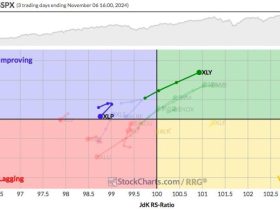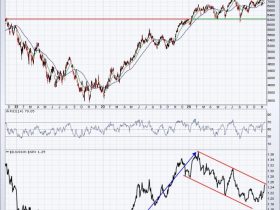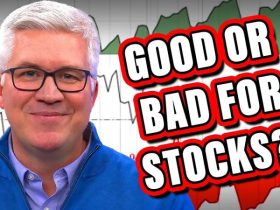The S&P 500 Under Pressure: Can Strong Seasonality Save It?
The S&P 500, a prominent benchmark index that tracks the performance of 500 large-cap U.S. companies, is currently facing considerable pressure amid various economic and market uncertainties. As investors closely monitor the index’s movements, questions arise about whether strong seasonality patterns could serve as a saving grace for the S&P 500 during this challenging period.
Historically, the S&P 500 has exhibited certain seasonality trends that have influenced market movements and investor sentiment. One such pattern is the Santa Claus rally, which typically refers to a rise in stock prices during the last five trading days of December and the first two trading days of January. This phenomenon, often attributed to holiday optimism and increased investor buying activity, has been a recurring theme in the stock market.
Additionally, the January effect is another seasonality pattern that investors observe. This effect suggests that small-cap stocks tend to outperform large-cap stocks in January, potentially leading to positive returns for the overall market. This trend is thought to stem from tax-loss harvesting activities at the end of the year, followed by renewed interest in small-cap stocks at the beginning of the new year.
While these seasonality patterns have historically provided some support for the S&P 500, it is essential to note that past performance is not indicative of future results. The current market environment, characterized by geopolitical tensions, inflation concerns, and the ongoing global pandemic, presents unique challenges that could impact the efficacy of these seasonal trends.
Furthermore, the Federal Reserve’s monetary policy decisions, inflation data releases, corporate earnings reports, and geopolitical developments will all contribute to shaping the market’s direction in the coming months. Investors must carefully assess these factors alongside seasonal patterns to make informed decisions regarding their investment strategies.
In conclusion, while strong seasonality patterns such as the Santa Claus rally and the January effect have historically provided some tailwinds for the S&P 500, the current economic and market uncertainties underscore the need for vigilant analysis and risk management. Investors should consider various factors influencing the market and exercise caution when relying solely on seasonal trends to guide their investment decisions. By maintaining a diversified portfolio, staying informed on market developments, and adapting to changing conditions, investors can navigate the complexities of the market landscape and position themselves for long-term success.











